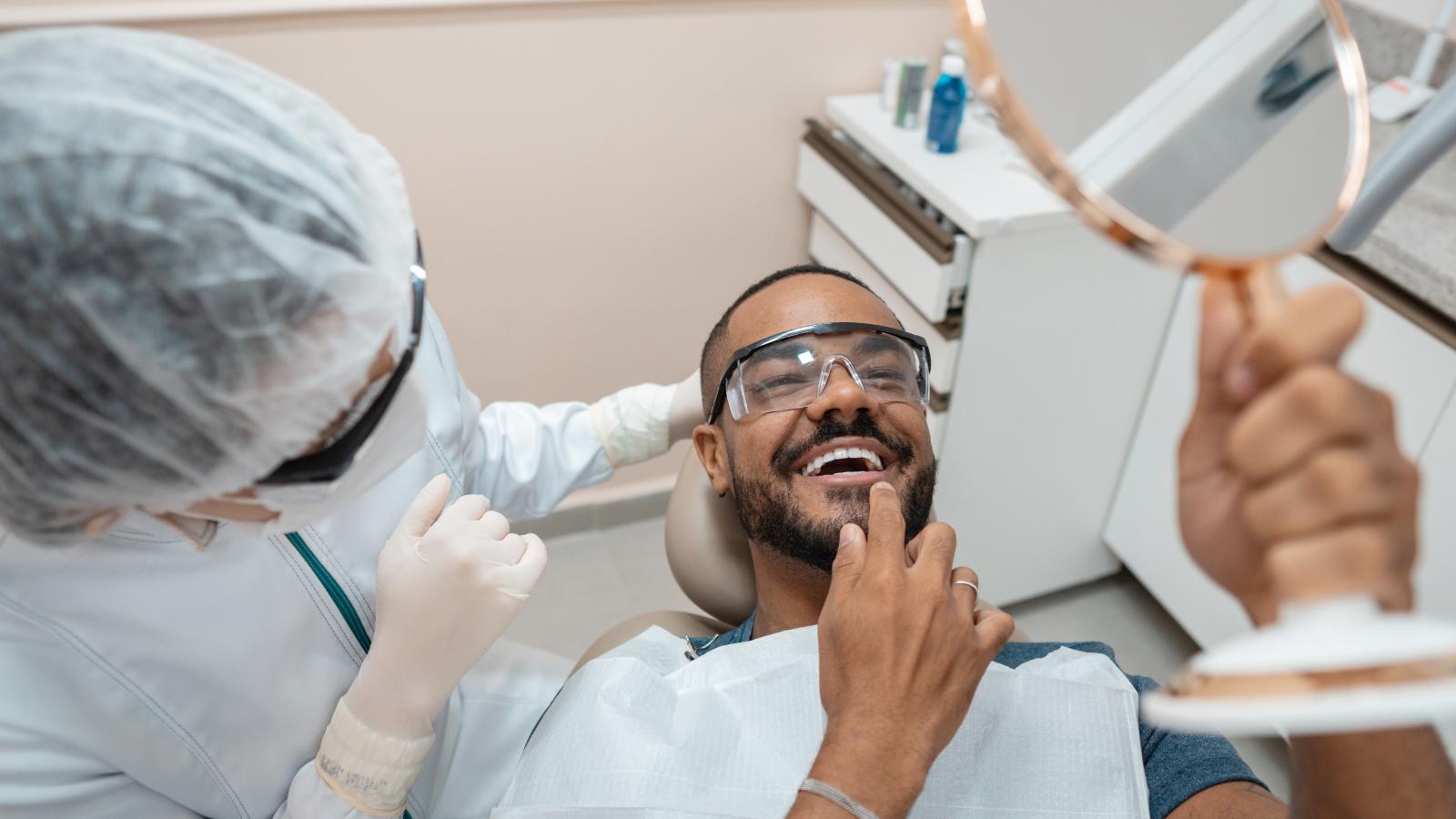Considering tooth gems? Here’s what you should know

Teeth embellishments are nothing new — they were popular in the 1990s and have a long history dating all the way back to the 7th century A.D.1 Now, in 2025, they're trending again, propelled by a TikTok craze. But oral health professionals aren’t jumping on the bandwagon.
At a recent webinar on children’s and adolescent’s oral health, Katie Mace, Dental and Vision Wellness Lead for Guardian noted: “Kids are getting serious adhesives and putting “stylish” jewels on their teeth because it looks pretty, or it looks cool.” But even in the best of circumstances, “if you have these tooth gems on try to practice great oral hygiene, you still have the inability to brush your teeth in the best way possible. So tooth gems are a no go.”
If you — or your teen child — still want to consider tooth gems, there are several things you should know in order to avoid dental problems down the road. This article will cover some of the risks of tooth gems and what you might expect if you go this route.
How do tooth gems work?
Most tooth gems are small decorative adornments that are bonded to the surface of the tooth using a dental adhesive. They are often made from gemstones (real or artificial) and metal components.
Tooth gems are not typically permanent. Most are designed to last 3-12 months, at which point they should be removed by a professional.
A dentist could in theory install tooth gems, though many traditional dentists don't offer the service. A lot of people have taken to do-it-yourself (DIY) kits sold online. Professionals urge caution with these DIY kits, as material quality and safety can vary — and incorrect installation could damage your teeth.
Are tooth gems safe for your teeth?
DIY tooth gems are generally unsafe for your teeth. If the proper adhesive is used and a trained dental professional applies the gems, tooth gems may potentially be safe.1 However, there can still be a number of risks, including:
Damage to tooth enamel
Plaque and bacteria build up around the tooth gem
Tooth sensitivity
Gum irritation
Damage to opposing teeth
Tooth discoloration
Potential allergic reactions
Risks increase significantly for tooth gems applied at home. The material quality for DIY kits varies dramatically, and the adhesive used may not be dental-grade. This can adversely affect oral health and lead to discomfort and damage to the enamel — the hard outer layer that protects teeth from acids, bacteria and harmful substances.
DIY tooth gems may also be more likely to detach accidentally, posing a swallowing or choking risk.
Will dentists place tooth gems?
Many traditional dentists don’t work with tooth gems, but some may offer the service on request.
In the United States, there are no formal regulations surrounding the placement of cosmetic tooth gems. Because of this, some businesses in the consumer cosmetics industry are starting to apply tooth “cosmetics” (gems) for clients, and DIY kits are available for purchase online. Before considering any provider to place (or remove) tooth gems, make sure they are staffed by trained dental professionals and have the appropriate licensing.
Bottom line: Consider the risks carefully
Generally, people should not get tooth gems unless they first carefully consider the risks, expenses, and potential hassles involved. So please remember the following and be sure to share it with your teen, tween, and young adult children.
As discussed above, tooth gems can cause enamel damage, increased risk of tooth decay and gum disease, tooth discoloration at or around the application site, chipping or cracking of teeth, chronic bad breath, allergic reactions, injury to lips and gums, and in rare cases, the risk of swallowing or choking on a loose gem.
Equally important, tooth gems may impede your dentist or dental hygienist in their efforts to provide quality dental care, and may also make it more difficult for you to maintain your daily dental health regimen.
In conclusion, while tooth gems are a cosmetic novelty, they are also serious business. So proceed with caution.
